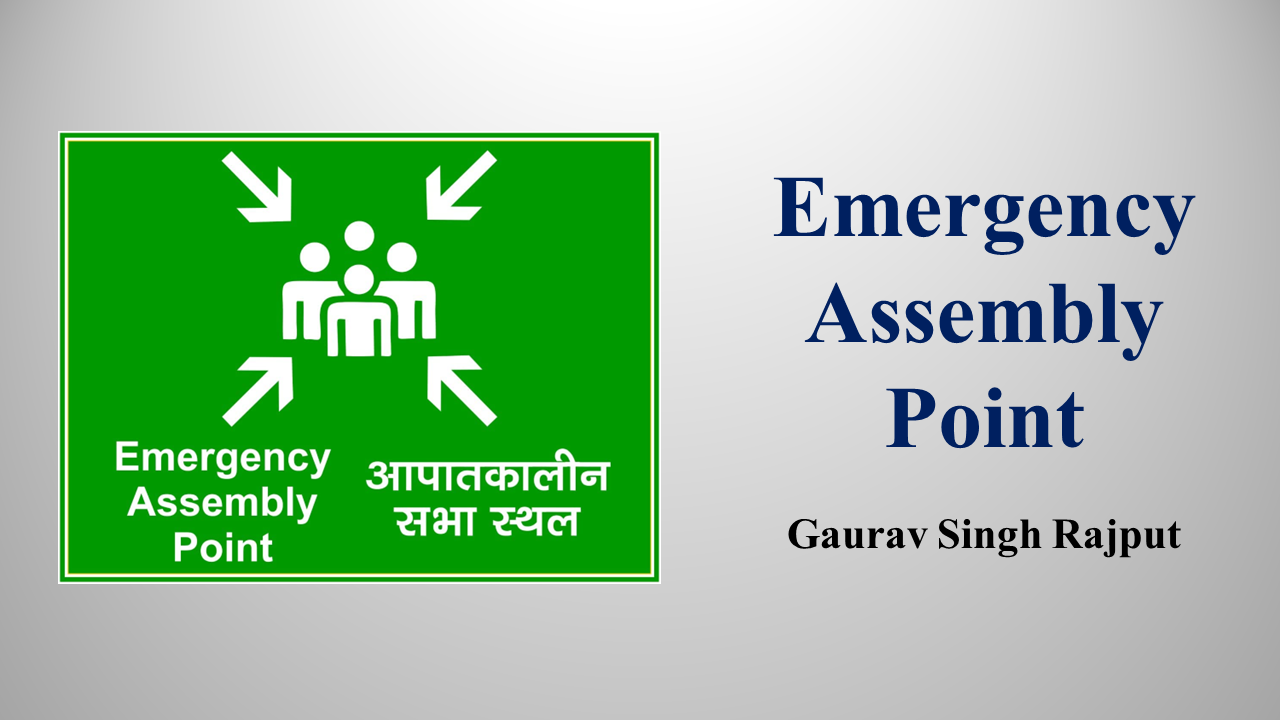
Emergency Assembly Point
In simple language you can define a Fire Assembly Point is a location where workmen/staff/people and visitors can gather in the event of fire/leak/explosion and other emergency to ensure everyone is in a designated safe area. It help you make sure that people will know where to gather following an emergency evacuation. Logically assembly point should not be very near to the process equipment and very far off for a person to go to the assembly point. The idea is to gather all the people in a safe place. This is the priority. The route to assembly point should be safe. The second one is to extend any help at the time of emergency.
No such requirements in mentioned in EHS acts and rules. practically it is not possible. For high hazard industries like petroleum, petrochemical, nuclear power plant etc., Large no of tanks with tonns of capacity installed in kilometers. oil & gas companies spread in 100 to 1000 acres. In such plants Hazardous area spread around at least 1km to 10km area. for small to medium scale Industries plant spread in 5 to 50 acres. If govt prescribes any fixed distance, it will not give effective results. In practical assembly points are created at four ends of plant. based on the wind direction and entry/exit route, during emergency employees will evacuate from safe gates.
These are the some point we should kept in mind while designing assembly point.
1. Size
It seems an obvious requirement, but the fire assembly point must be big enough to accommodate all the people into that particular area/building. If your workplace is especially large, you may need more than one primary assembly point, especially if your premises has multiple exit points. The main thing to remember is that the location of your assembly point will differ depending on the size and layout of your premises/buildings, and where the escape route ends.
2. Access
For fire assembly points to serve their purpose they must be easily accessible and have an unobstructed pathway leading to them. The path leading to then should always be kept unobstructed and should be marked properly, indicating EMERGRNCY EXIT. You must also try and consider any workmen with mobility issues and assess how far they should be expected to travel, and try to make the journey as quick and convenient for them as possible.
3. Backup
If your assembly point is unable to be used on the day a fire strikes, it is vital that there are backup options available. This is to ensure that the fire safety procedures can still go ahead with minimal confusion. To encounter this issue minimum 2 assembly point should be designed. Is should be located opposite to plant/building.
4. Location
Large, wide and open areas are preferred for fire assembly points, but they should not be located where they may hinder the arrival of the emergency services e.g. driveways or ambulance. So that people can be evacuated from that place easily. Ensure that the assembly point is well-lit, well-signposted and with no dead ends. If your working area is enclosed/fenced then assembly point must be located near to entry/exit of that area.
5. Distance
The assembly point should be a suitable safe distance away from the unit/building, far enough away to be clear of any possible smoke or heat being generated from the unit/building. Too close to the unit/building could mean your people being affected by heat, smoke and falling debris, they could also be in the collapse zone should the building fall down.
6. Other Dangers
Don’t automatically assume your are clear of danger once you have left the afflicted building. Check for any hazards outside of the premises, such as vehicular movements and any other foreseeable risks, and make sure your people are aware of these potential hazards.
7. Inform and Advise
To ensure that evacuation can run smoothly during both fire drills and actual fires, your employees need to be fully aware of the fire evacuation procedures, and also the locations of the assembly point and backup assembly points (Master Assembly Point). Ensure that any new staff have been informed of the procedures and assembly points when they begin their job. Once the fire assembly points have been decided, employees and others such as contractors and visitors must be provided with adequate information, instruction and training on the action to take in the event of a fire alert, including assembly points.
Corporate EHS Head HORIBA India |Ex Corporate Head HSE JAKSON Group | EX DANA- Anand Group | DGFASLI - RLI | NEBOSH IGC | IOSH | LA 14K & 45K | MBA Fire Protection & Safety Management | PGD Environment Law & Policy |ESG
8moPrashant Tyagi
Global ChemSAFE BDM | MineARC Systems Emergency Shelters
4yGood article - it should be made clear that fire muster points are not suitable for any other hazard other than fire. Last thing you want to do when an event involves blast or loss of chemical containment is make people stand around out in the open.